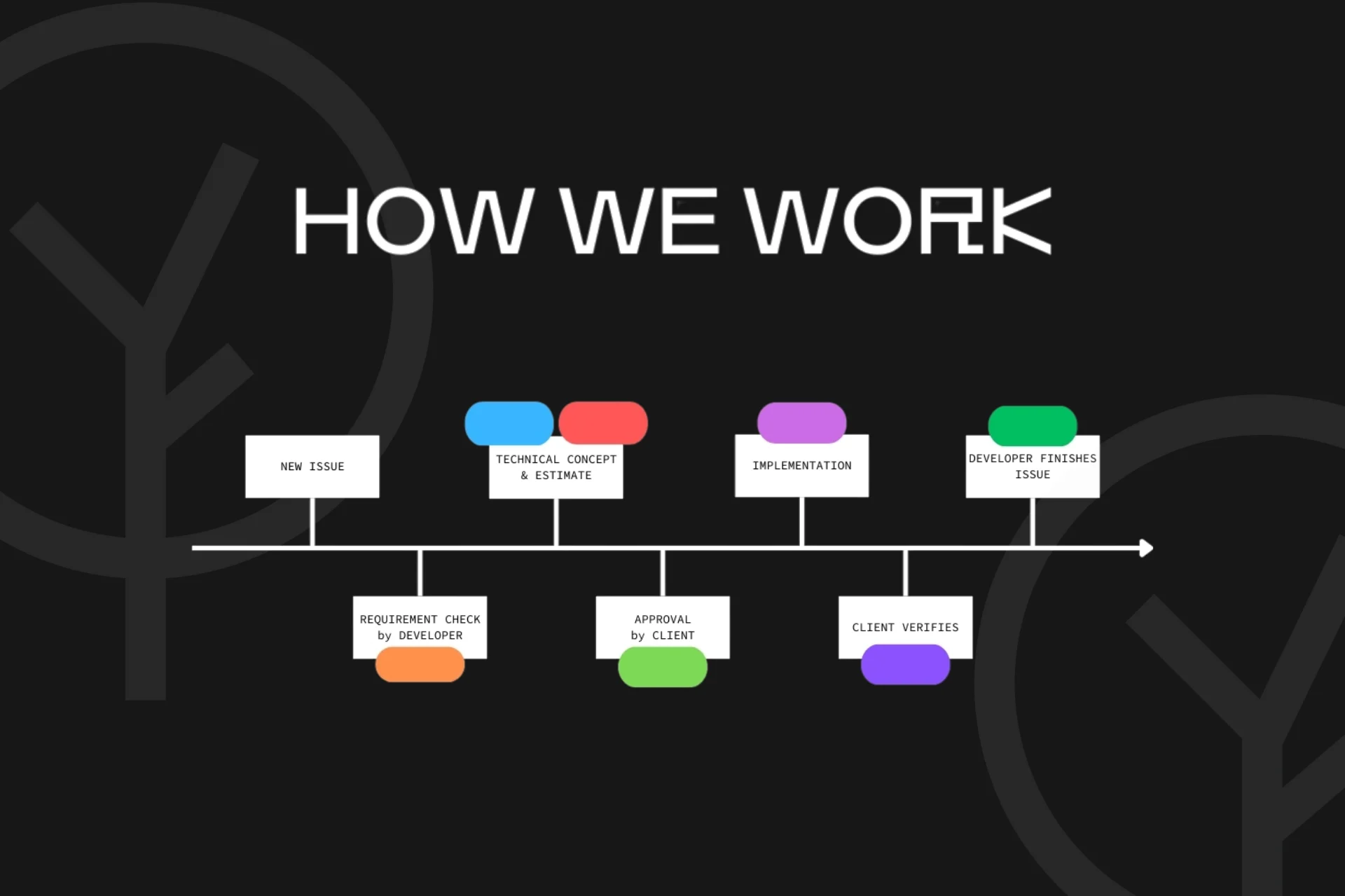
In the fast-paced world of web development, transparency is often a buzzword, but what does it truly mean to be transparent in the context of software development and deployment? At our Magento agency, we’ve experienced the frustration of opaque workflows firsthand. Issues disappear into the void, and clients are left wondering, “Where does my project stand? What’s being worked on? When will it be done?”
In response, we crafted a workflow designed to eliminate these problems. Our process focuses on keeping clients informed and engaged at every stage. Whether you’re dealing with simple bug fixes or large-scale feature development, our system ensures that you are always in the loop, from issue creation to deployment. Let's break down how this comprehensive, transparent workflow works and why it might be exactly what you're looking for.
The first step in any project is identifying and defining the issue.
At the outset, our clients create a ticket in our system, flagging a specific issue or request for improvement. This could be anything from fixing a small bug to implementing a new feature. Here’s where we begin to differentiate ourselves. We immediately dive into a detailed evaluation of the ticket, which goes beyond just reading the issue. We conduct a full requirement check to make sure that all details are clear and actionable.
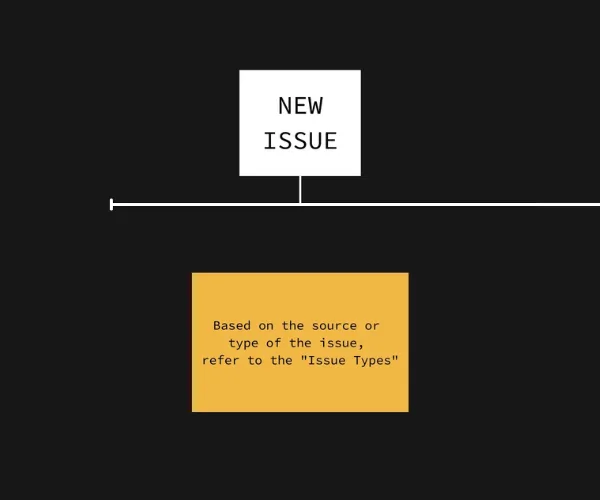
The agreed-upon initial review period, typically between two and four hours, allows us to comb through the issue thoroughly. If any aspect of the ticket is ambiguous or requires further clarification, we don’t just sit on the issue. We proactively reach out via your preferred communication channel — whether it’s email, Slack, or a video call. By the time we’re done with the evaluation, both parties have a crystal-clear understanding of what needs to be done.
Most agencies perform a basic review and move on, but we focus on depth right from the start. By ensuring that all questions are answered upfront, we significantly reduce the chances of miscommunication later. Moreover, the client is part of this discussion, ensuring they have a voice in shaping the solution from the very beginning.
Once we’ve agreed on the initial evaluation, we move forward with meticulous documentation. Every decision, approval, clarification, and action point is logged within the ticket. This makes our workflow not only transparent but also fully accountable.
Our documentation is designed to ensure there’s never a moment where you’re left guessing. Want to check back on what was agreed upon two weeks ago? Or what the exact specification for a feature was? It’s all there, visible at all times. This historical context prevents misunderstandings and provides full traceability from start to finish.
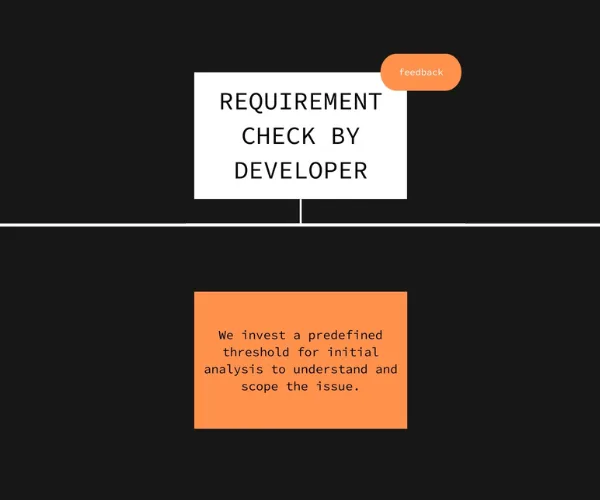
Most development teams track their internal discussions, but often leave clients out of the loop. Our system ensures that both clients and developers have access to the same information. T his kind of shared visibility fosters a better collaborative environment and helps align expectations across all parties.
After the issue has been thoroughly evaluated, the next step is crafting a technical concept that outlines the solution. Whether it’s a minor tweak or a complex new feature, we draft a clear, detailed plan that reflects exactly what will be done.
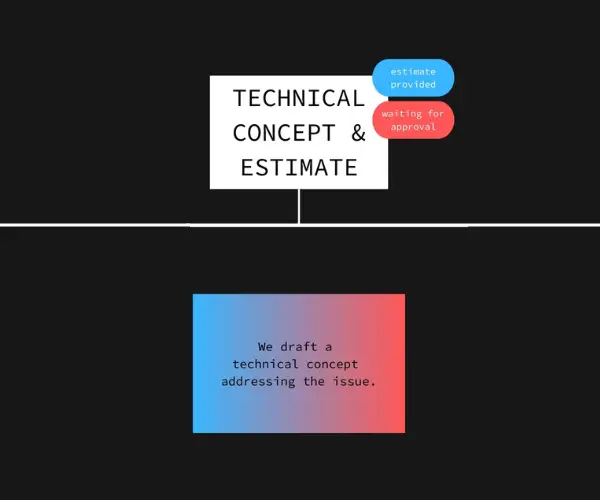
What makes this unique is our commitment to ensuring you are aware of the costs and time involved. Before any coding starts, we present you with an estimate of the effort required. Here’s where transparency really kicks in: nothing moves forward without your explicit approval.
Worried about hidden costs or scope creep? We notify you the moment we approach 80% of the estimated time, allowing for adjustments and approvals before extra time is spent. This level of financial transparency means you’ll never be surprised by unexpected costs.
In traditional development workflows, estimates are often vague and only loosely adhered to. By providing clear estimates upfront and tracking them closely throughout the project, we ensure that clients are never blindsided by ballooning costs. This predictability in budgeting is critical for keeping long-term development partnerships strong.
Next, we add a visual layer to our workflow. We use a color-coded labeling system within our ticketing software to allow you to see, at a glance, exactly where your issues are in the pipeline. Is it in development? Has it reached testing? Is it ready for deployment? You won’t have to sift through endless emails or status updates; the system itself gives you an at-a-glance view of every issue’s current state.
These labels are not just for tracking. They are active indicators of project health. If a task hits the maximum estimate, the label changes. If it’s stuck in QA or waiting for feedback, the label reflects that. This way, both parties are empowered to keep the process moving and ensure nothing slips through the cracks.
Traditional issue tracking often leaves clients in the dark about where their project stands. With our visual system, you can quickly identify bottlenecks and ask for updates on specific issues. It’s an extra layer of transparency that ensures you’re always in the loop.
Once development is completed, we deploy the update to a testing environment. This stage is client-driven: you get to review the feature or fix before it goes live. We never push anything to production without your approval. Whether it’s a bug fix, API communication, or a front-end feature, your input is critical during this phase.
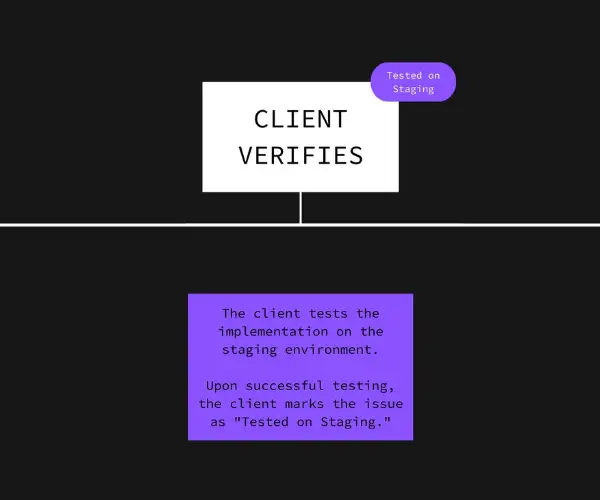
You have full control to test, validate, and provide feedback. If something isn’t right or doesn’t meet your expectations, we go back and refine it until it’s perfect. Only once you are completely satisfied does the issue move to final deployment.
In many workflows, testing and approval are afterthoughts, often rushed through or done internally without much client input. We prioritise this stage, making sure you have the final say on every deployment. This level of client control ensures that the final product is exactly what you envisioned, with no unexpected changes or last-minute compromises.
One of the major pain points in development projects is uncertainty about costs and timelines. By keeping the ticket updated in real-time with any modifications or additional hours spent, you always have a clear view of your project’s progress. As we track time against the initial estimate, any adjustments or extra work are flagged in the system so you’re never caught off guard by additional expenses.
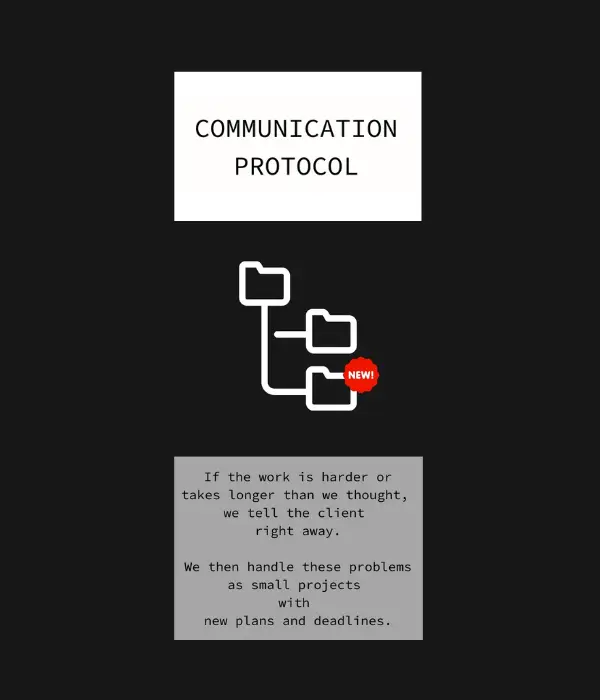
By the time a release is scheduled, you have a complete overview of what’s included, how long it took, and how much it cost.
Budget and timeline transparency is often an afterthought in many workflows, leaving clients to deal with unexpected charges. Our system removes that uncertainty. By keeping everything documented and visible, we ensure that there’s no ambiguity about what’s happening with your project at any point.
Our approach works because it’s built for flexibility and traceability. The core structure is consistent across all our projects, which allows us to maintain a level of standardisation that clients can rely on. At the same time, it’s flexible enough to adapt to specific client needs, meaning we can tailor the workflow to suit any project or situation.
This structure ensures that you are always informed about progress, and any roadblocks or delays are visible and actionable. You never have to wonder what happened to an issue or when it was deployed; the entire history is available for you to review at any time.
In a world where development workflows often feel like black boxes, we’ve made it our mission to create a system that prioritises visibility, communication, and accountability. From issue creation to final deployment, our workflow ensures that you’re always in control.
The result? A development process that’s predictable, reliable, and — most importantly — transparent. If you’re tired of feeling like you’re left in the dark about your online shop’s development, our process puts you back in the driver’s seat, where you belong.
Arrange a non-binding appointment with Matthias
